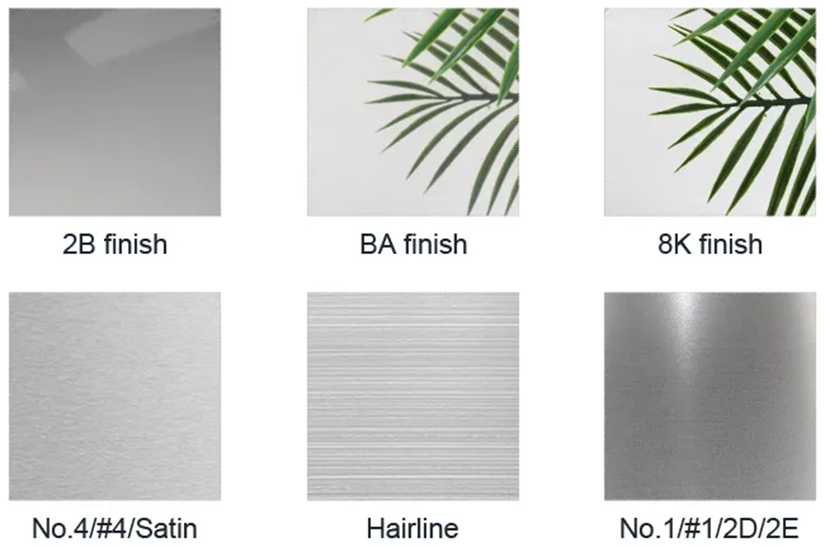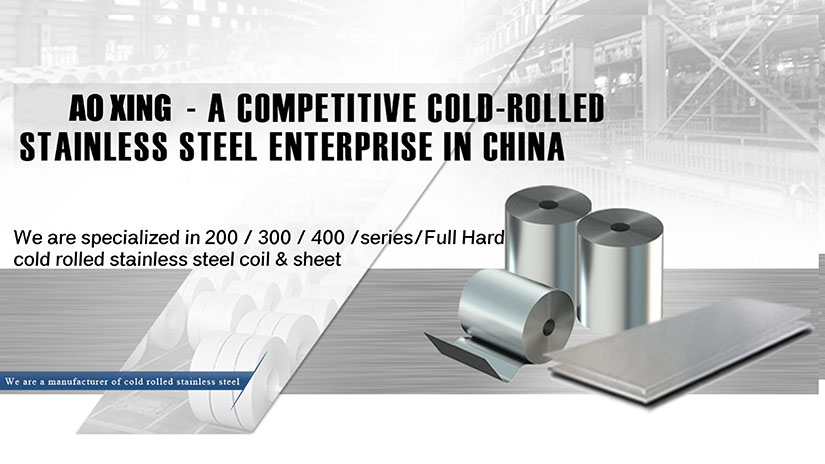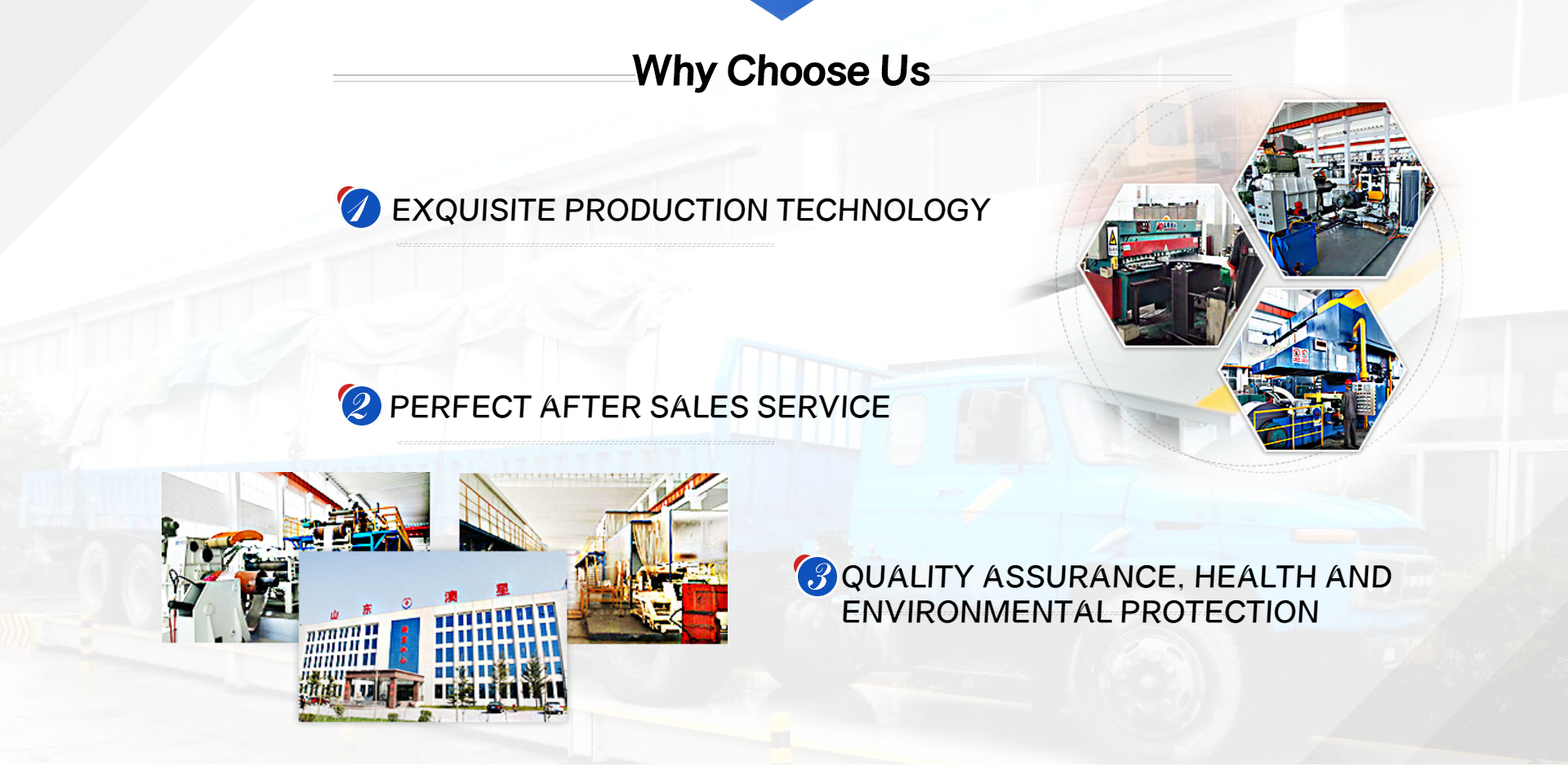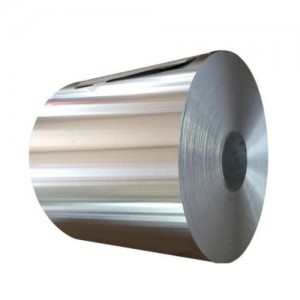305 Stainless Steel Sheet
What is 305 Stainless Steel Sheet?

Type 305 stainless steel sheet, known as the "free spinning grade," is an innovative chromium-nickel stainless steel designed to address the need for a ductile material with a reduced propensity for work hardening during forming processes such as spinning, stamping, and forming. This grade increases the nickel content beyond the typical 18-8 composition while reducing chromium to enhance ductility and minimize work hardening rates. As a result, Type 305 stainless steel requires less process annealing compared to Types 302 and 304, leading to lower costs for final processing due to diminished needs for final grinding and polishing. Exhibiting similar corrosion resistance to Type 304, it also boasts commendable oxidation resistance up to 899°C. Type 305’s unique composition allows it to be easily formed and deep-drawn into intricate shapes, maintaining a nonmagnetic state post-cold work. However, it is advised to exercise caution as its autogenous welds are more prone to hot cracking when compared to 304 or 304L, highlighting a specific consideration for its welding applications.
Features of 305 Stainless Steel Sheet
Grade 305 stainless steel sheet stands out for its exceptional formability, robust strength, and superior corrosion resistance. Notably distinguished by its low work and strain hardening rates, AISI 305 offers ease in forming and fabrication processes. Characterized by its non-magnetic nature, 305 SS maintains this attribute even after extensive forming, distinguishing it from other stainless steel grades. Moreover, unlike some stainless steels, 305 steel cannot be hardened through heat treatment, highlighting its unique composition and applications. This combination of features makes 305 stainless steel an ideal choice for a wide range of applications, emphasizing its adaptability and efficiency in various manufacturing contexts.
305 Stainless Steel Chemical Composition & Technical Data Sheet
305 Stainless Steel Standards Comparison
| STS | USA | UNS | CHINA | EURONORM | RUSSIA | SWEDISH | JAPANESE | |
| GRADE | AISI/ASTM | NO | GB | NO | NAME | GOST | SS | JIS |
| 305 | 305 | S30500 | 0Cr18Ni12 | 1.4303 | X4CrNi18-12 | 12Х18Н9 | X4CrNi18-12 | SUS 305 |
305 Stainless Steel Chemical Comparison
| Grade | Standard | Chemical Composition(%) | ||||||
| C | Si | Mn | P | S | Cr | Ni | ||
| 305 | ASTM A240 | ≤0.12 | ≤0.75 | ≤2.00 | ≤0.045 | ≤0.030 | 17.00~19.00 | 10.50~13.00 |
305 Stainless Steel Mechanical Properties
| Grade | Tensile Test | Hardness Test | |||
| 0.2% Y.S(Mpa) | T.S(Mpa) | Elongation(%) | Hardness | Rockwell | |
| 305 | ≥172 | ≥483 | ≥40 | Annealed | ≤70 HRBW |
305 Stainless Steel Finish & Application

The 305 stainless steel sheet, known for its excellent formability and corrosion resistance, finds widespread use across a variety of applications. Its adaptability is showcased in the production of barrels, shells, and components such as cold-headed rivets and screws, which benefit from the material's resistance to work hardening. Its superior drawability makes it ideal for creating intricate shapes like spun or deep-drawn eyelets, emphasizing its utility in automatic screw machines and electronic enclosures. This grade's applications extend to drawn housings, tank covers, and writing instruments, underscoring its versatility. Beyond industrial applications, 305 stainless steel is also preferred in the kitchen utensils and dairy industry, showcasing its safety and durability in food contact and processing environments. Additionally, it is used in appliances and steam traps, further highlighting its resistance to corrosion and heat, making it a preferred choice for both practical and specialized uses.
305 Stainless Steel Sheet Package & Loading Details
At Aoxing, as a premier provider of 305 stainless steel sheets, our dedication extends to the excellence of our packaging and shipping practices, developed from years of export experience. We are well-versed in the standards required for export packaging and take additional steps to reinforce our products within the container, ensuring they withstand the rigors of transportation without damage.
Our 305 stainless steel sheets are individually wrapped in robust, water-resistant materials to guard against environmental elements. To ensure the sheets remain immobile and maintain their pristine condition during transit, we employ strategic bracing within the container. This methodical approach to packaging guarantees that your stainless steel sheets arrive in perfect condition, ready for your project needs.




WHY CHOOSE US?

We are the cold-rolled stainless steel coil production base in China with 200,000 tons capacity annually.
1. Guaranteed Stock Availability: Experiencing stock shortages during crucial times can hinder your projects. Our robust inventory management ensures a consistent supply, ready to dispatch large quantities swiftly, keeping your operations smooth and uninterrupted.
2. Comprehensive Range of Specifications: Finding the exact stainless steel coil specifications can be challenging. We offer a diverse range of specs, ensuring you find precisely what your project demands, with the assurance of our commitment to meeting your specific needs.
3. Customized Material Processing: Custom processing needs can be demanding. Our advanced facilities provide tailored solutions, from precise dimension alterations to specific finish treatments, ensuring your requirements are met with utmost precision.
4. Accurate Shearing Services: Precision is key in stainless steel utilization, and our expert shearing services guarantee exactness in every cut, aligning perfectly with your specifications and quality expectations.
5. Cost-effectiveness is crucial in supplier selection. Our optimized procurement and cost-efficient processes ensure you receive not just premium-quality products but also the best prices, offering exceptional value for your investment.


305 Stainless Steel Sheet FAQ
1. Can you provide custom 305 stainless steel sheet?
Absolutely, we tailor 305 stainless steel sheet to your needs, ensuring your specifications for thickness, width, length, finish and physical properties are met.
2. What's the delivery timeline?
Quick delivery for trial orders within a week, while regular orders range from 7-30 days.
3. How do you guarantee your ss 305 stainless steel sheet quality?
Our ss 305 stainless steel sheets undergo rigorous inspections during manufacturing, cutting, and packaging to ensure the highest quality. And ss 305 stainless steel Mill Test Certificate is also providable.
4. 305 vs 316 stainless steel, what is the difference?
When comparing AISI 305 to AISI 304 stainless steel, both belong to the same austenitic 18-8 stainless steel family, known for their weldability and formability. The primary distinction lies in their corrosion resistance and nickel content, influencing their specific uses.
AISI 305 stands out for its exceptional formability, thanks to its lower rate of work hardening. It shares corrosion resistance characteristics similar to AISI 304, making it well-suited for applications that require extensive forming or deep drawing, like in the manufacturing of kitchen utensils and certain types of hardware.
AISI 304, however, boasts a balanced composition that includes a slightly higher chromium content and the addition of nickel. This composition enhances its overall corrosion resistance, rendering it a versatile choice across a broader spectrum of environments, from kitchen appliances to architectural paneling.
To summarize, while both AISI 305 and AISI 304 offer excellent corrosion resistance, the choice between them hinges on the specific requirements of the application. AISI 305 is favored for projects needing superior formability in environments where corrosion is not a primary concern. In contrast, AISI 304's enhanced corrosion resistance makes it suitable for a wider range of applications, including those exposed to more corrosive elements.
5. 305 stainless steel vs 304, what is the difference?
AISI 305 and AISI 304 stainless steels are both part of the austenitic family, renowned for their corrosion resistance and excellent formability. The key distinctions between these two materials primarily revolve around their chemical compositions, specifically regarding nickel content and their respective responses to work hardening.
AISI 305 boasts a higher nickel content than AISI 304, which significantly improves its formability and makes it ideal for applications that necessitate extensive bending and welding. This grade is specifically engineered to exhibit a slower work hardening rate, thereby simplifying the fabrication of complex shapes and designs.
While both AISI 305 and AISI 304 offer commendable corrosion resistance, making them versatile across various applications, it's the tailored composition of AISI 305 that provides it with an edge in scenarios where ease of material manipulation is crucial. AISI 304, with its typical composition of approximately 18% chromium and 8% nickel, capped with a 0.08% carbon limit, is a staple in a broad array of applications owing to its balanced properties.
AISI 305, by slightly adjusting these alloying elements, aims to reduce the material's work hardening rate. This modification makes AISI 305 particularly suited to tasks demanding superior formability and weldability, positioning it as a preferred material for specific manufacturing processes without sacrificing corrosion resistance.
6. What is the ss 305 price?
The actual ss 305 price will fluctuate based on exchange rates, market conditions, etc. For details, please contact us for a quote.








